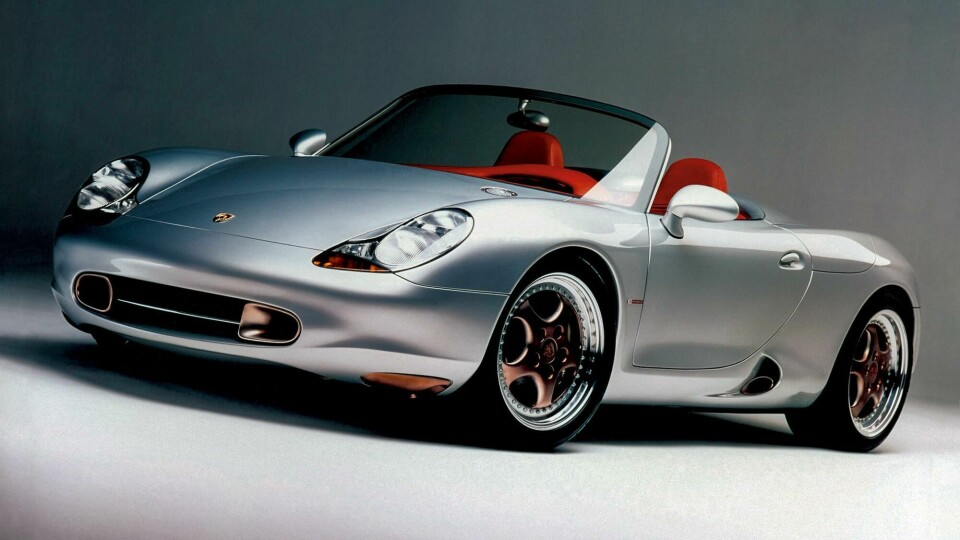
Concept Car of the Week: Porsche Boxster (1993)
Revisiting the concept that kickstarted Porsche’s road to recovery
During the late-1970s and ’80s, Porsche’s focus was on front-engined luxury coupes like the 924, 928 and 944, offered alongside its long-living 911 sports car. Demand for such models wasn’t as high as anticipated, and, coupled with tough times for the US economy – Porsche’s largest market – by the early 1990s the firm was far from the successful SUV and sports-car maker we know it to be today.
In order to survive, change was needed and a return to its sports-car roots was deemed to be the best chance it had to avoid being swallowed up by a competitor. Under the newly-installed head of Porsche design, Harm Lagaay, and studio chief Pinky Lai, the team set about creating a mid-engined, convertible concept to be shown at the 1993 Detroit auto show.

Called the Boxster – a portmanteau of ‘boxer’, for the horizontally-opposed engine configurations historically favoured by Porsche for its sports cars; and Speedster, the 356-based convertible sold in the 1950s – the concept was designed to test the waters, to see if buyers would show an interest in a sub-911 two-seat Porsche sports car, along similar, albeit more expensive, lines to the Mazda MX-5 introduced in 1989.

The exterior was credited to American designer Grant Larson, who worked to create a design that evoked the past – the 550 Spyder in particular – yet still looked forward. The proportions were similar to the old Spyder, with similar-length overhangs at either ends of a dramatically stretched wheelbase.

As with the old car, eyes were initially drawn to the Boxster’s oversized, graphic headlamps, while its lower mask was a more refined version of its predecessor’s. The concept’s surfacing appeared very simple, particularly the long, sloping rear deck flanked by small LED taillights, and broken only by a tortoiseshell-effect Boxster logo. However, a subtle flattening of the front and rear fenders caught more light, and added visual appeal.

The Boxster was painted in a subtle, retro Porsche racing grey, with the wheels, front intakes and small opening within the low-set intake for the engine set in the rocker were picked out in bronze, hinting a new technology within.

Designer Stefan Stark’s interior design also mixed retro and new themes. A floating wing cowl sat above the gauges, running down into pillars that sat either side of the driver’s legs, giving a roll-cage feel. The gauge pack was a riff on Porsche’s classic five-hole set of instruments, with the rev counter always at its centre. Rather than being located on the gauges, their markings were etched on the glass that covered them.

The centre stack featured an LCD display for the navigation system and built-in phone. As with the gauge surround, the centre tunnel was made from aluminium, punctured by the manual gearstick and its exposed mechanism, and two very cool propeller-style air vents, matching those in the door cards. The reddish-brown leather recalled the seats in the 1960 Porsche RS60 racer, while key switches were also picked out in tortoiseshell.

Porsche was overwhelmed by the response to the Boxster concept, announcing a month later that it would be built, with the production car arriving in 1996. In combination with a rethink of its manufacturing process, helped by Toyota’s streamlining skills, that cut the time it took to build a car in half, the Boxster was affordable, leading it to become the firm’s top-selling model, until the SUVs came along to help propel Porsche to the successful footing it holds today.




